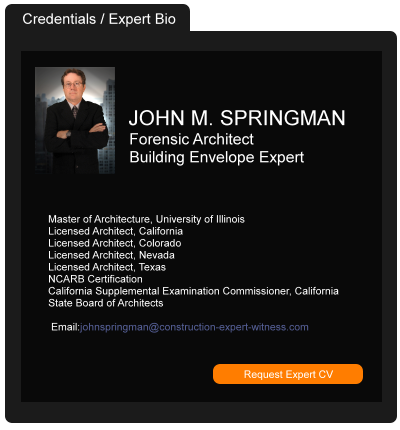The Starter Apartment Is Nearly Extinct in San Francisco and New York
October 28, 2015 —
Patrick Clark – BloombergSo you’re looking for a one-bedroom apartment in San Francisco, and you have about $2,000 a month to spend. You know the city’s median rent is more than $4,200 a month, but median means half the apartments cost less. Surely there are larger, more expensive apartments pulling up the midpoint.
Perhaps. But there’s a reason Google employees are sleeping in their trucks.
Ninety-one percent of one-bedroom apartments in San Francisco cost more than $2,000 a month. Perhaps more surprising is the number of apartments that occupy the high end of rental rates: In Manhattan, a fifth of one-bedrooms rent for more than $4,000.
Read the court decisionRead the full story...Reprinted courtesy of
Patrick Clark, Bloomberg
Developer Boymelgreen Forced to Hand Over Financial Records for 15 Broad Street
September 24, 2014 —
Beverley BevenFlorez-CDJ STAFFThe Manhattan Supreme Court “denied a last-ditch effort by Jeshayahu Boymelgreen to avoid handing over financial records as part of a state investigation into the development of 15 Broad Street in the Financial District,” according to The Real Deal. Attorney General Eric Schneiderman had ordered Boymelgreen to turn over the records. Futhermore, according to court records (as reported in The Real Deal), “the developer was also seeking to reduce the amount of money required to fund a $470,000 escrow account to make repairs at the condo — known as Downtown by Starck — which Boymelgreen jointly developed with Africa Israel.”
“We’re glad to see that the courts are rejecting Boymelgreen’s arguments why he shouldn’t be required to maintain an escrow account as security for the sponsor to obtain a permanent certificate of occupancy for 15 Broad, as was set forth in the very offering he participated in with Africa Israel,” Steven Sladkus, attorney for unit owners at the condo, stated. “Accountability is one step closer to the light at the end of the tunnel.”
Brian Itzkowitz, an attorney representing Boymelgreen, did not return The Real Deal’s calls or emails.
Read the court decisionRead the full story...Reprinted courtesy of
Before Celebrating the Market Rebound, Builders Need to Read the Fine Print: New Changes in Construction Law Coming Out of the Recession
November 26, 2014 —
Alan H. Packer - Newmeyer & Dillion, LLPAs the homebuilding market continues to improve, many builders find themselves maneuvering familiar roads. That said, important new realities have taken hold since the market collapse. Navigating these changes requires extra thought for practical and legal reasons.
Using Old Designs “Off the Shelf”?
The adoption of the California Building Standards Code in 2010, with an updated schedule to go into effect January 1, may complicate the use of older designs. In addition, some builders are contemplating building on pads constructed five or more years ago, temporarily shelved until market conditions improved. Because of changes in both the applicable Code and due to possible changes in the underlying soils and drainage, these projects require additional scrutiny before starting construction.
Mechanic’s Lien Law Changes
Not too long ago, the California Legislature recently overhauled the entire mechanic’s lien law system in California. New forms, new statutory references, new rules and deadlines are all applicable to projects under construction now. Make sure your documents are up to date, as the use of older forms (particularly for liens, progress payments, and final payments) could create legal problems in the future.
Indemnity Law Changes
Since 2006, California lawmakers have passed four rounds of legislation aimed at limiting indemnity provisions in construction contracts. The laws are aimed at two aspects of indemnity law: “Type 1” indemnity provisions, and liability for the costs of defending a claim.
Type 1 Indemnity. California law previously permitted a builder to obtain “Type 1” indemnity from its subcontractors for all claims. Under a Type 1 provision, if a claim arose out of the trade’s work, the trade was fully responsible to defend and indemnify the builder – even if other trades or the Builder were partially at fault. Some cases even allowed, typically in a commercial context, the builder to obtain Type 1 indemnity even if the trade was not negligent, as long as the claim involved its work.
Defense Obligation. In 2008, California’s highest court issued an opinion in Crawford v. Weather Shield, evaluating an indemnity provision requiring trade (a window supplier/manufacturer) to defend the builder in claims involving allegations of damages arising out of the trade’s work. Because the trade had contractually agreed to defend the builder, the Court held it responsible for the builder’s defense costs -- even though, ultimately, the trade was found
not liable for the actual damages claimed.
Recent legislation after Crawford has dramatically shifted how indemnity provisions will be enforced. Builders may no longer obtain Type 1 indemnity for residential construction defect claims covered by SB800; instead, indemnity is limited to the extent a claim arises out of the trade’s work. Even more recent legislation applied these changes to claims arising out of commercial construction projects. The recent legislation allows the trades “options” on how to defend the builder, with an eye toward requiring that they pay only a “reasonably allocated” portion for the builder’s defense costs.
Smart builders are refining their contract documents to take into account these new limitations on indemnity provisions.
Insurance Market Changes
Due to uncertainties in subcontractor insurance and other factors, many builders have also converted their liability insurance from a “bring your own” model to “wrap-up” insurance, where the builder’s policy also covers their trades. Builders should carefully examine their subcontracts in light of this change as well.
Trade Partner Changes
On a practical level, many trade partners, particularly in the residential sector, have gone out of business or moved on to greener pastures. Builders need to find and negotiate contracts with new trade partners on the fly, and educate them on the builders’ procedures for payment and construction.
SB800 documentation
A decade ago, most builders updated their purchase documents and subcontracts for California’s “Right to Repair Law” (also known as SB800), which set forth functionality standards for construction defects in residential housing, and procedures for resolving claims prior to litigation. Builders ramping up to meet market demand should examine how they implemented SB800 changes in contract documents. Issues to consider:
- Whether to opt out of -- or back into -- statutory procedures.
- Whether to include arbitration or judicial reference provisions to control where claims are litigated after the SB800 process.
- Re-training personnel to preserve SB800 rights, including sign-offs on purchase documentation and recordation of key documents.
- Recent Court of Appeal decisions have complicated the SB800 landscape, potentially opening the door to “common law” tort claims in at least subrogation contexts. Strategic planning at the document stage may be a good way to mitigate this risk as the cases wind their way through the judicial process.
The continuing surge in building activity is a welcome sign for builders who have weathered the storm. Before taking too many steps, builders should consult with counsel, their designers, and their insurance advisors to take into account the new realities of this recovering housing market.
About the Author
Alan H. Packer is a partner in the expanding Walnut Creek, CA, office of the law firm of
Newmeyer & Dillion LLP whose specialties include real estate, insurance, and construction litigation. To reach Alan, call 925.988.3200 or email him at alan.packer@ndlf.com.
Read the court decisionRead the full story...Reprinted courtesy of
Reporting Requirements for Architects under California Business and Professions Code Section 5588
December 22, 2019 —
Jordan Golden - Gordon & Rees Construction Law BlogBelow is an overview of the changes to California Business and Professions Code Section 5588 and its effect on the reporting requirements, for architects, in the construction industry.
Section 5588 Prior to 2005 Legislative Changes
Section 5588 of the California Business and Professions Code sets forth the reporting requirements for many business professionals including architects. Since 1979, Section 5588 has required architects and their insurers to report to the California Architect Board (the Board) “any settlement or arbitration award in excess of five thousand dollars ($ 5,000) of a claim or action for damages caused by the license holder’s fraud, deceit, negligence, incompetency, or recklessness in practice.”1
The language of the code section left open for interpretation the question of what types of settlement claims must be reported to the Board. Thus, in 2004, the Attorney General of the State of California published an opinion stating that a reportable settlement includes “any agreement resolving all or part of a demand for money which is based upon an insured architect’s alleged wrongful conduct.”2 He then went on to conclude that the only qualifications placed on the term “claim” for purposes of Section 5588 is that “(1) the demand be premised on the license holder’s alleged ‘fraud, deceit, negligence, incompetency, or recklessness in practice,’ and (2) the value of the claim, as measured by the settlement amount or arbitration award, exceeds $5,000.”3
Read the court decisionRead the full story...Reprinted courtesy of
Jordan Golden, Gordon & Rees Scully Mansukhani
Drywall Originator Hopes to Sell in Asia
October 22, 2013 —
CDJ STAFFWith all the talk of problems with drywall coming from China, one company wants to send drywall in the other direction. USG introduced its “Adamant Panel Board” (later Sheetrock) in 1917. But while USG has been a leader in the drywall market in North America, only about 20% of its sales are outside North America.
USG is partnering with Boral Ltd., an Australian building materials manufacturer. Earlier this year, USG sold manufacturing and distribution of certain products to the German company Knauf Verwaltungsgesellschaft. Knauf has sold drywall in the United States that was manufactured in China and found to exit corrosive fumes.
Read the court decisionRead the full story...Reprinted courtesy of
A Look Back at the Ollies
May 03, 2018 —
Beverley BevenFlorez-CDJ STAFFThe Jerrold S. Oliver Award of Excellence, also known as the “Ollie” award, is presented to “an individual who is outstanding or has contributed to the betterment of the construction defect community.” West Coast Casualty asks members of the construction defect community to nominate those they feel are deserving of the award, and then members vote for one of four nominees. The award is presented at the West Coast Casualty Seminar. Those recognized receive a plaque and a donation in the winner’s name to Habitat for Humanity as well as a local California and Nevada charity.
Jerrold S. Oliver was a “’founding father’ in the alternate resolution process in construction defect claims and litigation. His loyalty and commitment to this community were beyond mere words as he was a true believer in the process of resolution.”
Past Award Winners:
1996 - Awarded to Ross R. Hart, Esq. (Mediator - American Arbitration Assoc.)
1997 - Awarded to Merv Thompson, Esq. (Mediator in private practice)
1999 - Awarded to Tom Craigo, (Adjuster - C.N.A. Insurance Company)
2000 - Awarded to Kristi Cole, (Adjuster - Safeco Insurance Company)
2001 - Awarded to Karen Rice, (Claims Manager - ACE / USA)
2002 - Awarded to Stephen Henning, Esq. (Wood, Smith, Henning and Berman, LLP)
2003 - Awarded to Ross Feinberg, Esq. (Feldscott, Lee, Feinberg, Grant and Mayfield LLP)
2004 - Awarded to Janet Shipes (Adjuster – C.N.A. Insurance Company)
2005 - Awarded to Edward Martinet (Expert – MC Consultants)
2006 - Awarded to Hon. Victoria V. Chaney (Judge – Los Angeles Superior Court)
2007 - Awarded to Bruce Edwards, Esq. (Mediator) JAMS
2008 - Awarded to Gerald Kurland, Esq. (Mediator) JAMS
2009 - Awarded to Keith Koeller, Esq. (Koeller, Nebecker, Carlson and Haluck, LLP)
2010 - Awarded to Terry Wolcott – (Construction Defect Manager – Travelers Ins. Co.)
2011 - Awarded to George Calkins, Esq. (Mediator) JAMS
2012 - Awarded to Joyia Greenfield, Esq. (Lorber, Greenfield and Polito, LLP)
2013 - Awarded to Margee Luper (Claim Manager – XL Insurance Group)
2014 - Awarded to Matt Liedle, Esq. (Liedle, Lounsbery, Larson & Lidl, LLP)
2015 - Awarded to Robert A. Bellagamba, Esq. (Special Master/Mediator, Castle & Dekker)
2016 - Awarded to Lisa Unger, (Senior Claims Examiner, Global Management Liability Markel)
2017 - Awarded to Caryn Siebert, (Vice President, Claims, Knight Insurance Group)
Read the court decisionRead the full story...Reprinted courtesy of
Peru’s Former President and His Wife to Stay in Jail After Losing Appeal
August 10, 2017 —
John Quigley - BloombergFormer President Ollanta Humala and his wife Nadine Heredia will remain in jail while they are investigated for campaign donations involving Brazilian construction companies and the Venezuelan government, a Peruvian court said Friday.
The couple, who were given pre-trial detention three weeks ago, had asked the appeal court judges to change the order for one requiring them not to leave the country and to appear regularly before the authorities.
The couple turned themselves in on July 13 after Judge Richard Concepcion ordered 18 months of preventive detention for suspected money laundering. Concepcion had said there was sufficient evidence of wrongdoing and grounds to believe Humala and his wife would seek to obstruct the ongoing investigation by the Attorney General’s office.
Read the court decisionRead the full story...Reprinted courtesy of
John Quigley, Bloomberg
The International Codes Development Process is Changing to Continue Building Code Modernization
March 06, 2023 —
The International Code CouncilWashington D.C., March 02, 2023 (GLOBE NEWSWIRE) -- The International Code Council is revising its rigorous code development process. The changes will take effect in 2024-2026 for the development of the 2027 International Codes (I-Codes) and will move the development process to an integrated and continuous three-year cycle.
In the new timeline, year one will include two Committee Action Hearings for Group A Codes; year two will include two Committee Action Hearings for Group B Codes; and year three will be the joint Public Comment Hearings and Online Governmental Consensus Vote for both Group A and B Codes.
The addition of the second Committee Actions Hearings in year one and two will foster a more in-depth vetting of code change proposals, allowing an opportunity for the committee members to review and evaluate the original proposals and consider the submitted responses. This also provides more opportunity for proponents to build consensus for their code change proposal and ensure the best version of their intended improvement to the existing codes.
Additionally, with combined Public Comment Hearings in the third year, voting members are able to vote on all suggested changes to the next edition of the I-Codes at one time. The updated process also provides more opportunity for proposed new referenced standards to be developed and finalized on a consistent timeline regardless of the group (Group A or B) with which they are associated.
About the International Code Council
The International Code Council is the leading global source of model codes and standards and building safety solutions. Code Council codes, standards and solutions are used to ensure safe, affordable and sustainable communities and buildings worldwide.
Read the court decisionRead the full story...Reprinted courtesy of


































































